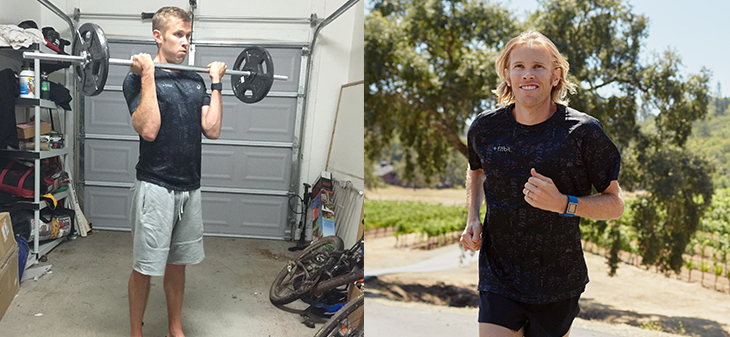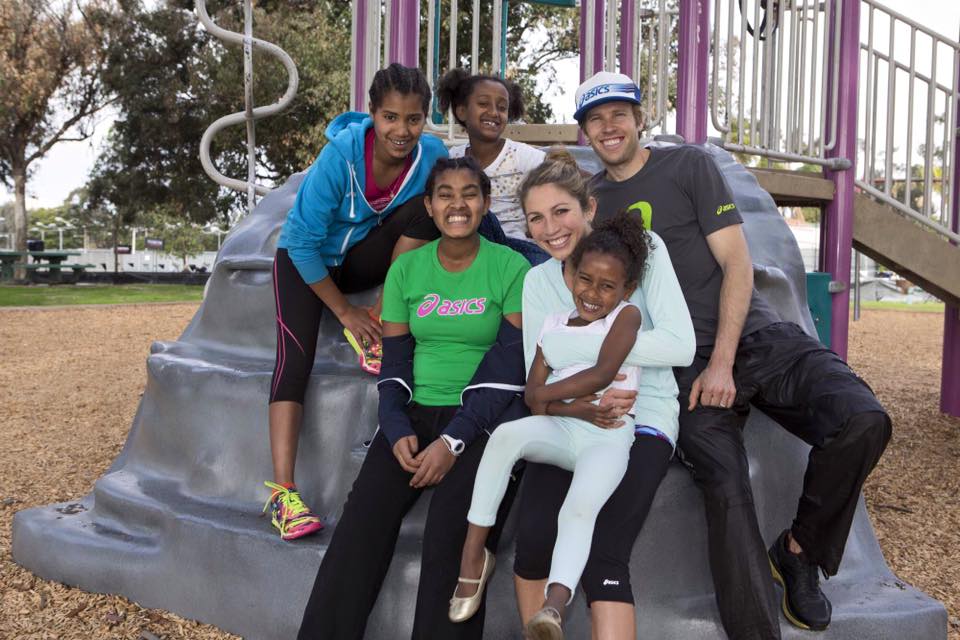By, Sara Hall
“I didn’t come out here to run 2:30” I told Ryan as we were talking through different race plans in the last few days before London Marathon. I had decided that after the Marathon Trials I wanted the chance to see what I could do after having such a good buildup (in weather cooler than 90 degrees). I didn’t feel the need to prove anything to myself or anyone else, it was more to see the fulfillment of my labors and for the pure joy of getting to go the distance and take on the challenge. London was a race I had witnessed Ryan come alive running twice, and I was excited to experience it myself.
Despite setting a new PR and achieving some personal breakthroughs in maintaining (close to) my pace the 2nd half entirely alone, I couldn’t help but be disappointed as I ran the exact time to the second (2:30:05) that I said would define an unfruitful trip. I chose to focus on the positives and choose gratefulness, and when I look back on the race is something I have to still consciously do. But it sparked something in me when I realized my unmet expectations had stolen the joy I had gone there to experience.
Fast forward less than 4 weeks later, and I lined up in Occidental to try a 5k track race since the Olympic Trials were 5 weeks away and there wasn’t time to delay. It was my first 5k in 3 years and I expected it to be embarassing, suffering lactic leg lock as I fought around the oval. Instead I gained speed and momentum as the race progressed and ended up finishing strong and just shy of the Olympic A Standard. Once again, my expectations had been wrong, but this time for better! Afterwards I wondered if I hadn’t anticipated being so underprepared but instead expected it to be easy and go well, if I could have dipped under that standard. It was the opposite of London, but both left me wondering whether having performance expectations was even a good thing to begin with.
As with most things, I often find parallels with what I experience running and with the rest of my life, including my family. Thus far our adjustment as a family and has far exceeded my expectations. The challenges I anticipated have not been an issue. But it has not been easy- just less challenging and in different ways.
As you prepare to adopt, you hear a lot about “attachment” being difficult, “acting out”, “shutting down” and other behavioral issues that often come from kids in hard places and I expected all of them. I expected it to take a while for my kids to be naturally affectionate- instead I got a child that literally attaches herself to me like a koala and prefers to be kissing (or, I kid you not, sucking on my face) as much as possible. This is a good thing, though sometimes I lose sight of that in the moment!) In this ease of transition, a different challenge has emerged- because my kids have defied the odds thus far and taken everything in stride and openly loved us from day one, I now too often forget where they have come from. I forget that these are not children who have been with me since inception and have grown up in suburban America and know how to do everything and all the social cues that we take for granted. If I’m not careful, that joy of how well we have adapted as a family can get stolen by new expectations just as it did in London.
Let’s take the issues of towels. If my daughter sees a dog hair floating along our hardwood floors (we have huskies, y’all, enough said) she will use no fewer than 8 paper towels to pick it up. Conservation for the environment is not even a remote concept. They also insist on bringing their face towels into the kitchen to be used there. And no matter how I try to protest or show them the towel holders on the kitchen island are their designated place the face/kitchen towels must always reside is on top of the gas stove. This is a small and silly example of how when I lose perspective, my expectations change, and that can lead to frustration/disappointment.
Aside from the daily mistakes as they navigate this alien planet and all that comes with figuring out how to parent all these age groups simultaneously, I’ve accepted that having 4 kids period is not easy, which is a good perspective to keep (ever wonder why pre-race workouts always feel the worse? It’s because you expect them to feel easy). Not easy, but worth it. One of my daughters I swear has a constant IV of espresso into her veins and two are requiring huge efforts to get caught up academically, and many of my runs I’m thinking through how to get them to a place of thriving independently one day. But the fact that these are my only problems is a testament to God’s abundant grace, and when I lose perspective I have to remind myself to take a moment to thank Him that these are the hardest moments! These are the best-case-scenario challenges.
So what is the solution, is it possible to stop having expectations altogether? I’m pretty sure that is impossible, our brains are
naturally hard-wired to make them. Plus I believe we should be living with hope and expectancy of good things, that is a life of faith. “Now faith is confidence in what we hope for and assurance about what we do not see” (Hebrews 11:1) I always want to have faith and hope, not settling for less of myself but being content with where things are at and not letting disappointment steal my joy. I want to be prepared for things to be hard and not always perfect, at the same time I don’t want that expectation to negatively shape my environment.
I don’t know (and if any of you do please chime in!) but I think the key in how to live in this tension is to step back, get perspective back and keep a heart of gratitude. When a race doesn’t go the way I planned or my child is helping “organize” by stacking everything in a giant tower or hiding it in drawers, I take a step back and realize that running 2:30 was still a PR, and that my daughter’s willingness to show love by helping out is a major gift in itself. Life will never look exactly as you expect it to, but through the twists and turns there is an invitation to let go of control and rigid expectations and stay open to finding the “gold” in every outcome. A flexible heart can stay hopeful and full of faith, rather than tainted by past disappointments, and with it we can maneuver unmet expectations while still keeping our joy.
Sara
(**I am too lazy to imbed pictures. For related pictures, see my Instagram page @SaraHall3 🙂 )
RACE UPDATE: This blog was started a while ago and with most non-urgent things these days was shoved to the back burner of my life! Since then, I ran the 5k at the US Olympic Trials and placed 14th in the final, which was not the supernatural race I was hoping for, but not a failure considering I could count the number of track races I’ve run the last 3 years on one hand. I have turned my attention back to my true love, the roads, and am gearing up to run the TCS New York City Marathon for the first time! I have spectated this race for the last 10 years straight and felt absolutely wired by the electric atmosphere in the city and magical finish line in Central Park. It is a race I’ve always wanted to run but wanted to be ready for, and excited that this is the year to take on this epic challenge!




